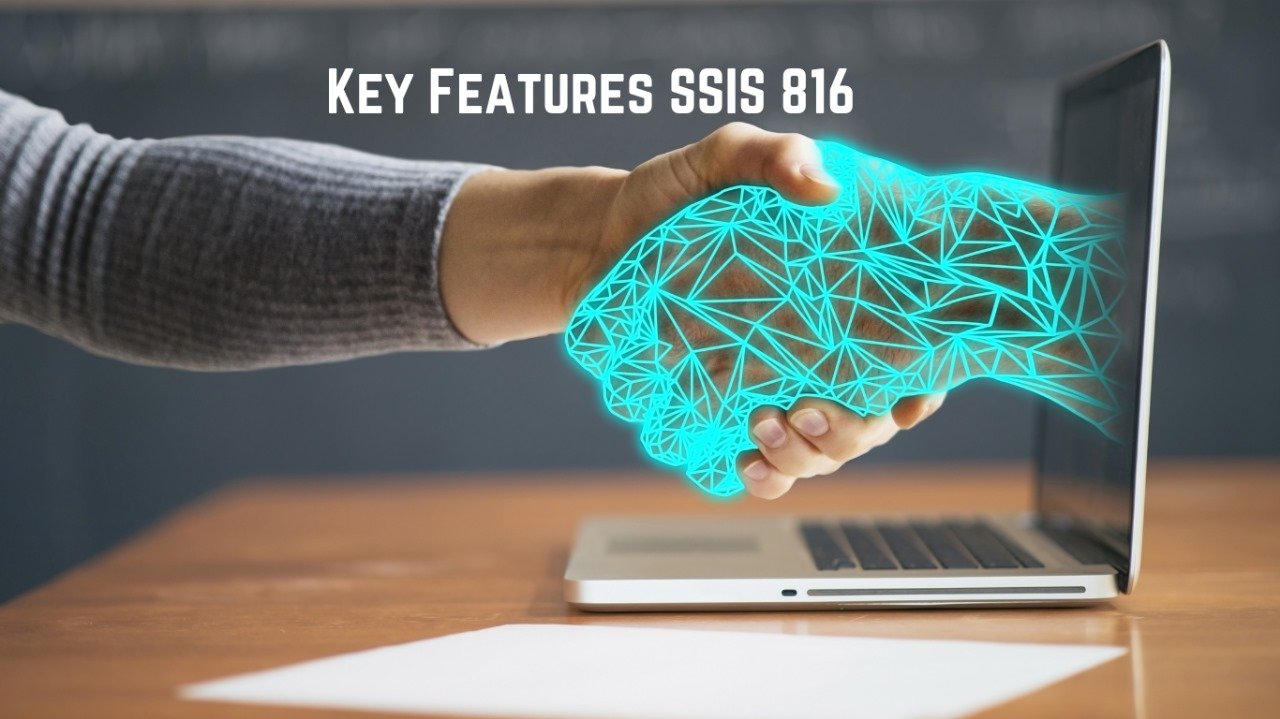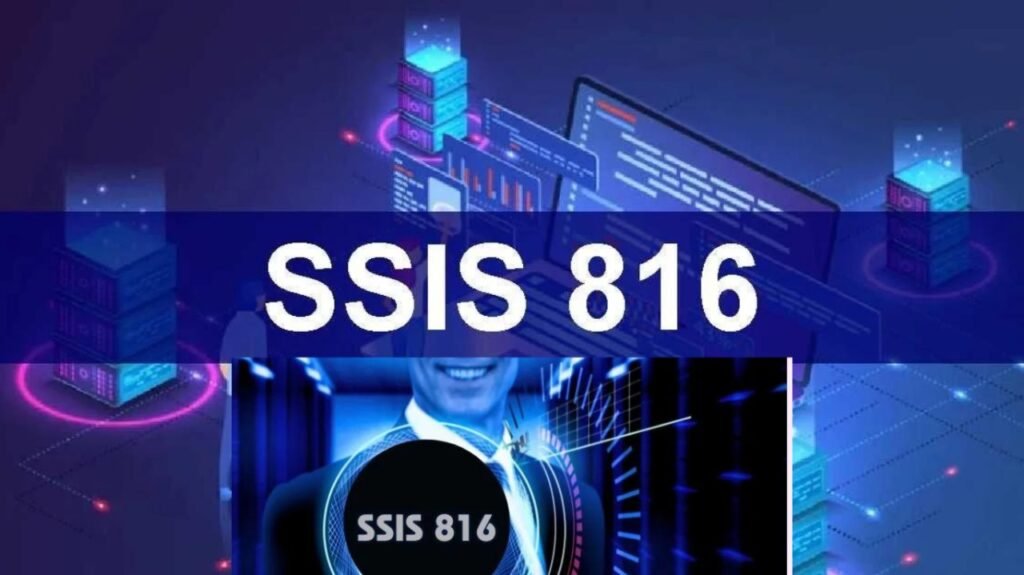Do you know that feeling when you have a new tool or program you need to learn for work, which initially seems daunting? SSIS 816 is one of those things. As a data professional, sooner or later, SSIS 816 is going to come across your desk. Try not to stretch. We have you covered. Here, we’ll separate what SSIS 816 is, the reason it makes a difference, and how to truly understand it. We’ll give you the central issues you want to be aware of to prepare for SSIS 816 – no CS degree is required. Whether you’re new to SSIS or an accomplished master, you’ll leave this post with the centre ideas, a blueprint to learn it, and the certainty to say, “I have this.” So, get ready to level up your SSIS skills.
An Introduction to SSIS 816
SSIS 816 is the most recent variant of SQL Server Mix Administrations, Microsoft’s concentrate, change, and load (ETL) instrument. If you’re curious about ETL, it refers to the most common way of separating information from different sources, changing it to fit business needs, and stacking it into an objective data set.
A Robust Toolset
SSIS 816 provides a rich set of tools for building complex ETL solutions. Some of the capabilities include:
- Interfacing with many information sources, such as SQL Server, Prophet, MySQL, and Succeed documents.
- Performing changes on information like conglomerating, combining, arranging, and purging information.
- Stacking information into objections like SQL Server, Purplish blue SQL Data set, and Purplish blue Information Lake Stockpiling.
Improved Performance
Compared to previous versions, SSIS 816 includes significant performance improvements. Some of the enhancements include:
-A quicker information stream motor that can deal with higher volumes of information. – The capacity to run different information streams in line with streamlined throughput. – A purplish blue Information Lake Stockpiling Gen2 connector with quicker load execution.- Incremental load features to load only new or changed data.
Tight Integration with Azure
SSIS 816 is tightly integrated with Azure, Microsoft’s cloud platform. Some of the Azure features include:
-Running SSIS bundles in Sky Blue Information Plant, a cloud-based information reconciliation administration. – Putting away SSIS bundles in Purplish blue Information Lake Stockpiling Gen2 with high accessibility and debacle recuperation. – Utilizing Purplish blue SSIS Combination Runtime to run SSIS bundles in Purplish blue. – Interfacing with various Purplish Blue information stores like Sky Blue SQL Data set, Sky Blue Neurotransmitter Investigation, Purplish Blue Information Lake Stockpiling, etc.
With a vigorous toolset, further developed execution, and tight mix with Purplish blue, SSIS 816 is a convincing ETL answer for endeavors hoping to modernize their information joining stages.

Key Features and Capabilities of SSIS 816
SSIS 816 accompanies a few significant redesigns that will make information mixing a breeze. ###Robust worked in parts. SSIS has north of 150 implicit parts, like sources, changes, and objections, to deal with any information combination task. Interface with any information source, perform complex changes, and burden information into many misgivings.
Scalability and performance
SSIS 816 utilizes a new engine specifically built for high performance. It can scale with increased data volumes, allowing you to integrate data from a more significant number of sources faster without worrying about performance bottlenecks.
Enhanced deployment
Deploying SSIS packages has always been challenging. With the built-in deployment wizard, you can effortlessly deploy packages to the SSIS catalog. The catalog also gives you extra features like configuration, execution, monitoring, and security of deployed packages.
Improved data mining
The new Information Mining Wizard provides a simple connection point for fabricating information mining models. It incorporates calculations for exemplary information mining undertakings like bunching, characterization, relapse, affiliation, and that’s just the beginning. You can now make, train, test, and approve information mining models as a feature of your information incorporation processes.
SSIS catalog
The SSIS catalog is a central storage for all deployed SSIS packages. It allows you to organize packages into folders, set parameters, configure environments, execute packages, monitor executions, and view reports. The catalog database also stores the metadata and configuration for all packages deployed to the catalog.
With a robust built-in toolset, scalability, enhanced deployment, and new data mining capabilities, SSIS 816 is a powerful data integration platform suitable for enterprises of any size. Now, go ahead, explore, and enjoy this handy tool!
How to Get Started With SSIS 816
To prepare with SSIS 816, you’ll have to introduce it and design a couple of rudiments. SSIS represents SQL Server Joining Administrations, a part of SQL Server that allows you to disengage, change, and burden information. SSIS 816 alludes to the device’s 2016 variant.
Install SSIS
To begin with, you’ll have to introduce SQL Server 2016, which incorporates SSIS. You can download SQL Server 2016 Engineer Release for nothing from Microsoft’s site. During establishment, choose the “Mix Administrations” part to introduce SSIS.
Start SSIS and Create a Project
Open SSIS from the Microsoft SQL Server 2016 program bundle. You’ll be prompted to create another venture when you first open it. Select “Mix Administrations Undertaking” and give it a name. This will be your first SSIS package.
Set Up Connections
You’ll need to configure connections to the data sources your package will use. In the Connection Managers area, right-click “New Connection” to set up connections to databases, files, servers, etc. For now, create a sample connection to the AdventureWorks2016 database installed with SQL Server.
Add Workflow Components
You can build your data flow by dragging components from the SSIS Toolbox onto the design surface. Try adding a Data Flow Task, which lets you extract and transform data. Then, at that point, add an OLE DB Source to separate information from your AdventureWorks association, a Determined Segment to change the information, and an OLE DB Objective to stack the information.
Run the Package
Finally, you’re ready to run your first SSIS package! Press the green play button or select “Start Debugging” to run the package. Check that data flows properly from the source to the destination. Congratulations, you’ve created your first SSIS 816 package!
From here, you can expand your knowledge of fostering more complicated information combination arrangements using SSIS 816. Please let me know if you have any other inquiries!
Top 5 Use Cases and Applications for SSIS 816
ETL (Extract, Transform, Load) Processes
SSIS is broadly utilized for ETL processes, separating information from different sources, changing it, and stacking it into an objective information stockroom. SSIS 816 works on the exhibition and strength of ETL processes with new elements like the Purplish blue Element Pack, CDC parts, and improved prearranging parts.
Data Migration
Moving information from one framework to the next is typical for information mix instruments. SSIS succeeds at moving information between on-premises and cloud information sources. The Purplish blue Component Pack in SSIS 816 makes it much simpler to move information to and from Sky Blue administrations like Sky Blue SQL Data set, Sky Blue Information Lake Stockpiling Gen2, Sky Blue Mass Stockpiling, and that’s only the tip of the iceberg.
Workflow Automation
SSIS can be utilized to computerize information streams and work processes. You can plan bundles to run at explicit times or in light of occasions. SSIS 816 upgrades work process robotization with the capacity to run bundles on Purplish blue and exploit sky-blue mechanization highlights.
Data Cleansing
Information quality is fundamental for examination and announcement. SSIS provides apparatuses for information purification, like the Fluffy Query and Fluffy Gathering changes, to normalize information and handle flaws. The exhibition and size of these devices are worked on in SSIS 816.
Change Data Capture
The CDC components in SSIS allow you to capture changes made to your data sources over time. You can then integrate just the changes into your data warehouse. SSIS 816 improves the performance and reliability of CDC processes and expands CDC to more data sources.
SSIS 816 expands on SSIS’s strong foundation with new highlights and upgrades focused on availability, efficiency, and scale. This most recent variant will permit you to achieve more with your information incorporation processes across on-premises and cloud conditions.
Conclusion
So that’s it – the vital things to be aware of SSIS 816. While it might appear overwhelming from the outset, finding the opportunity to comprehend the new highlights and abilities will take care of over the long haul. Move toward it with persistence and interest. Lean on your network and community for guidance. And remember – change brings opportunity. Though the path ahead takes work, imagine what you’ll be able to accomplish with this powerful new toolset. The future of data integration is bright. And you get to help shape it.
FAQs:
What is SSIS 816?
SSIS 816 is a help pack update for SQL Server Reconciliation Administrations (SSIS) 2016. Delivered in 2021, SSIS 816 incorporates execution enhancements, bug fixes, and new highlights for SSIS. If you’re running SSIS 2016, introducing SSIS 816 is prescribed to exploit the most recent updates.
Do I have to uninstall SSIS 2016 to install SSIS 816?
No, you do not need to uninstall your existing SSIS 2016 installation. SSIS 816 builds upon and updates your current SSIS 2016 setup. It will automatically upgrade your instance of SSIS 2016 to include the new features and fixes in SSIS 816.
What’s new in SSIS 816?
SSIS 816 introduces several enhancements to improve performance and productivity. Some of the significant new features include:
- Improved performance for Lookups, Fuzzy Lookups, and Term Extraction transformations. These transformations can now leverage cached data for faster processing.
- New Hadoop file source and destination components to easily read and write data in Hadoop clusters.
- Additional data flow components include pivot transformation and data profiling destination.
- Support for new data types, including geography, geometry, and hierarchy.
- Updated Azure-related components to work with newer versions of Azure services.
Do I need to make any changes to my existing SSIS packages?
Most existing SSIS 2016 packages will continue to work as-is after upgrading to SSIS 816. However, you may need to make minor changes to packages that use new or updated features. It’s a good idea to test your packages after upgrading to ensure full compatibility. You may also need to redeploy packages to the SSIS catalog after upgrading.
How do I install SSIS 816?
You can install SSIS 816 on-premises using the SQL Server 2016 setup wizard. Select “Upgrade SQL Server 2016 Integration Services” to begin the installation. SSIS can also be installed on Azure-SSIS Integration Runtime to run packages in the cloud.
You are moving to SSIS, exploiting the most recent presentation enhancements and highlights for building and running your SSIS bundles. Let me know if you have any other inquiries!
Read also: Iamnobody89757: The Story Behind My Unique Username












1 thought on “SSIS 816: What You Need to Know”